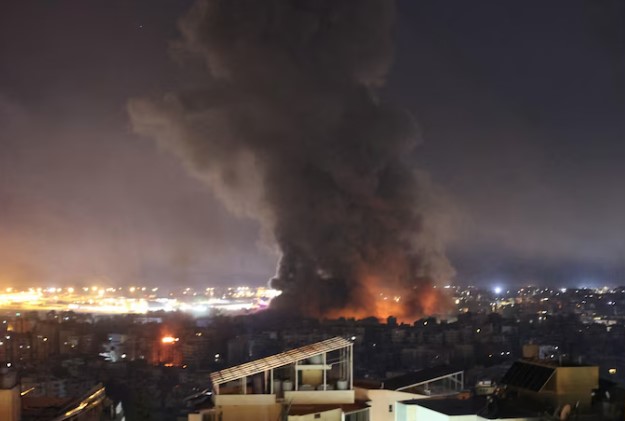Sirens echoed throughout central Israel as the country’s air defense systems were suddenly activated. A missile launched from Yemen was detected moving toward Israeli territory, prompting an immediate response.
Rising Tensions Across the Region
Within moments, the Israeli Air Force intercepted the projectile mid-air before it could reach its intended target.
This is not an isolated case. In fact, such missile launches have become increasingly frequent over the past several months. The group behind these attacks, based in Yemen, has openly declared that it will continue to fire projectiles toward Israel as long as the fighting in Gaza goes on.
Just a week before this latest incident, a missile fired from Yemen managed to slip through the Israeli defense systems and landed near Ben Gurion Airport, Israel’s main international airport situated close to Tel Aviv. That particular missile did not cause casualties, but it alarmed the nation. The airport is a highly sensitive area, and the fact that a missile from Yemen could reach it underscored a major vulnerability. It also exposed the limits of even the most advanced defense systems.
The recent interception, while successful, triggered panic across multiple Israeli cities. Air raid sirens rang out, warning residents to seek shelter. Streets emptied as people rushed indoors. Schools and offices temporarily halted activities. The impact of such events is not just physical—it also takes a toll on the psychological state of the population and puts strain on emergency response teams. These repeated attacks from Yemen are pushing both Israel’s defense and civilian systems to their limits.
China’s Eye in the Sky? U.S. Accuses Satellite Firm of Fueling Houthi Attacks on Navy Warships
Expensive Defense Against Long-Range Threats
Intercepting missiles is a highly technical and costly operation. These are not small rockets—they are long-range ballistic missiles, capable of traveling hundreds or even thousands of kilometers at high speeds. Neutralizing them requires more than just short-range weapons. Israel relies on a complex network of advanced air defense systems, including the Arrow, David’s Sling, and the American-built THAAD systems.
Each time a missile is intercepted, the cost to the defense system is significant. It’s not just the financial expense of launching interceptor missiles, but also the manpower, surveillance, and coordination required for each operation. Experts estimate that a single interception could cost tens of thousands to hundreds of thousands of dollars. Over time, this puts pressure on the defense budget and can affect other national resources.
Even when these systems work perfectly, there’s still a cost in public confidence and routine life. Alarms disrupt school hours, business operations, and public transportation. For every missile launch, dozens of emergency personnel are mobilized, which stretches their capacity for dealing with other issues. These frequent missile launches also require 24/7 monitoring and technical readiness from the military, increasing the workload on already active teams.
Deadly US F-35 Deployment Escalates Conflict with Houthis in the Middle East
More than 30 missiles have been launched from Yemen in recent months. Although most were intercepted, the few that reached Israeli soil revealed how unpredictable and persistent the threat is. The need to constantly be prepared has put enormous stress on the country’s defense forces and its people.
Airstrikes and Reactions
Initially, Israel chose not to respond directly to the missiles from Yemen. Instead, it relied on the United States and other allies to manage threats coming from that region. This strategy changed after repeated launches and the missile that struck near the airport. In recent days, Israel has started conducting its own airstrikes on selected targets in Yemen.
These airstrikes reportedly focused on sites linked to the missile launches—storage areas, transportation points, and communication hubs. Despite this, the launches from Yemen have not stopped. This has sparked concern about how these systems are surviving airstrikes and continuing to operate.
Adding to the complexity is the involvement of foreign defense technology. The United States has deployed its own advanced missile defense systems to support Israel, showing the seriousness of the threat. Systems like THAAD and others have played a key role in intercepting some of the longer-range missiles.
But the situation remains unstable. The rapid pace of missile launches, their increasing range, and the continuation of attacks even after airstrikes make this a deeply sensitive issue. Each incident, whether intercepted or not, adds to the growing sense of insecurity.
$82 Million F-35 Nearly Hit by Rebel Missile in Yemen — Deployment Sparks Scrutiny
In just a short time, missile fire from Yemen has evolved from rare headlines to a frequent and dangerous challenge. The recent successful interception shows that defenses are working, but also reminds everyone that the threat from afar is still very real and very active.

